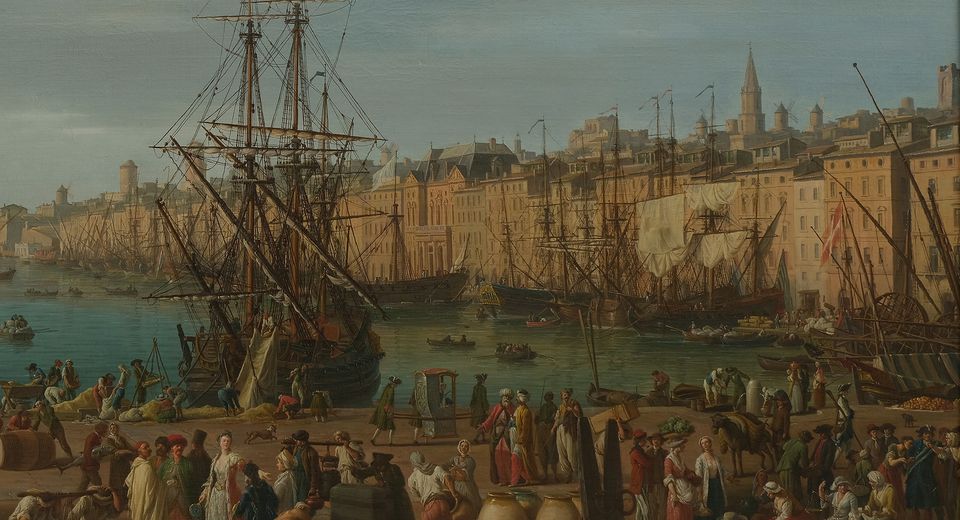Inside the port of Marseille
Paris
Photographic print on baryta paper
Seen from the Pavillon de l'horloge du Parc
This work belongs to the series of Views of the Ports of France, an exceptional commission placed on Joseph Vernet in 1753 by Louis XV, through his Director of Buildings, the Marquis de Marigny (1727-1781), to exalt the grandeur of the French navy. Attentive to the smallest detail, the artist displayed an incomparable talent for depicting scenes of daily life and the various components of a highly hierarchical society.
A royal commission
The Musée National de la Marine has thirteen of the fifteen canvases that make up the ensemble, which was originally intended to comprise twenty-four, on deposit with the Musée du Louvre, as testimony to France's renewed maritime ambitions. A very precise itinerary had been drawn up by the Direction des Bâtiments at the time of the commission, and the first plans were intended to show in detail the activities specific to each region.
In these richly documented scenes, aesthetic perfection is placed at the service of politics and royal instruction, taking us back in time to a France that was still dreaming of great maritime adventures, but which was suddenly brought to a halt by the Seven Years' War (1756-1763).
These paintings transport the viewer into a bygone world where genre scenes compete with scientific and technical precision. Prosperity and abundance permeate these works, where trade is omnipresent, particularly the import of distant or exotic goods.
A snapshot of 18th-century Marseille
This is one of two views of the port of Marseille painted by Vernet in 1754, for which the painter followed the instructions on the itinerary.
The view is taken slightly higher, from the top of the Pavillon de l'Horloge overlooking the quay, to take in the full width of the port. A wide variety of goods are displayed in jars, jars, bales or even in bulk for cereals, from all around the Mediterranean. The flags distinguish the nationality of the ships, and on the quayside there is a colourful crowd whose costumes evoke the Orient, mingling with port employees, stall-holders and a few elegant onlookers, among whom the artist has drawn himself with his wife Virginie and son Livio.
Collection highlight
Discover the must-see works at the Musée national de la Marine.

